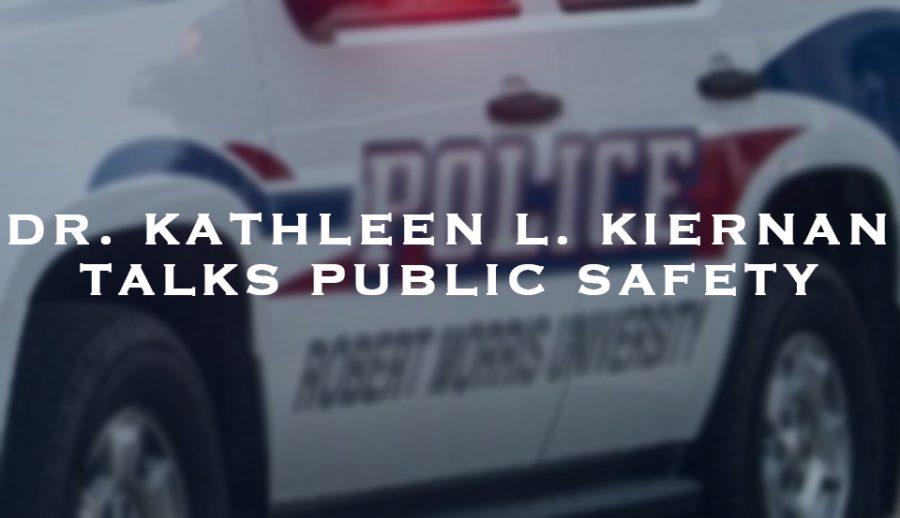Safety expert gives college campuses advice on handling threats
November 8, 2017
Safety may be at the front of many students’ minds since the attacks like the Texas church shooting and the Las Vegas shooting. Kathleen Kiernan is a campus public safety expert who gives students strategies to keep themselves and others safe on a college campus.
Kiernan worked in federal law enforcement for 29 years and acted as assistant director for the Office of Strategic Intelligence and Information for the Bureau of Alcohol, Tobacco, Firearms, and Explosives. Now, she is the CEO and founder of Kiernan Group Holdings, Inc. (KGH) which has prepared an approach on how to run a campus safely called Preparedness Without Paranoia.
“I have always wanted to write about how changing the world is not a difficult thing to do; literally, everyone has the chance to do that in some way,” said Kiernan in an email interview. “It becomes a matter of choice — to deliberately contribute to the world you want to live in, rather than become invisible within it, or worse, be victimized by it.”
KGH works with many colleges and universities to develop emergency, crisis management and contingency plans when there are active shooters, workplace violence, terrorism and other threats. Preparedness Without Paranoia prepares organizations with long-term and short-term safety plans.
“It educates and empowers individuals to recognize early indicators of anomalous behavior and to have the confidence to know how to react when it is encountered,” said Kiernan. “The wonderful part is that this enhanced situational awareness transcends every part of that employee’s professional and personal life.”
Kiernan and her team help campuses make sure policies, procedures and protocols are in place for students. KGH prepares crisis and contingency plans in case of an active threat.
“Your own university’s security office will also have additional resources available on the subject,” said Kiernan. “Campuses can also engage with specialized experts, such as Kiernan Group Holdings, to deign preparedness approaches and share those tactics with the community.”
According to Kiernan, colleges and universities have been establishing threat assessment teams to report early signs of a threat. Kiernan also makes it known that reporting strange behavior of an individual is acceptable.
“A key part of education is the lesson that reporting anomalous behavior is acceptable and is actually a personal responsibility and a personal obligation,” said Kiernan.
There are multiple threats that can occur on a college campus that include:
- Student Protests that turn violent
- Active Shootings
- Active threats by students, faculty or visitors
- Radicalized or self-radicalized students
- Unlawful predatory behavior
- Hazing that results in the death of a student
There can always be threats around that are not visible to the untrained eye. Even the most simple of signs can show a threat.
“It can range from a slip and fall, which is of a physical nature, to behavioral indicators that a student, faculty member, staff or visitor is on the pathway to violence,” said Kiernan in the email interview. “The key is to promote enhanced situational awareness.”
Campuses have upgraded their security of threats. They coordinate and collaborate with other public safety departments. Some campuses have formed groups with other colleges and universities to talk with public safety officials and coordinate training. Robert Morris University does this as well.
“The key to campus safety is a collaborative and integrated security environment to include representation from emergency response departments, Human Resources, Facilities and Student Affairs,” said Kiernan.
Kiernan tells others to look out for yourself and keep a close eye on those around you.
“Security is almost always relegated to someone else,” said Kiernan. “We would stress that security should be part of the fabric of learning, and the practice of developing the mental preparedness mindset should be a lifelong educational process.”
Social media distractions and the “invincible spirit” make students and individuals more vulnerable to criminals. Trusting that the environment is safe can result in victimization.
“As an organization, we believe there is a level of engagement that mitigates the implications on a personal and organizational level when an ordinary day turns into an extraordinary one,” said Kiernan.
According to KGH, 70 percent of active shooters happen in places like shopping centers, academic institutions and government facilities. 24.4 percent of the 70 percent occur at academic institutions.
“In short, students should practice enhanced awareness not just at school, but off campus as well. This one small change in habit will serve students throughout their lives. “
For more information on RMU public safety, visit Public Safety’s page or RMU Sentry Media’s article on how the RMU police and counseling center deal with active shooters.
For more information on public and campus safety, visit Kiernan Group Holding’s website.












